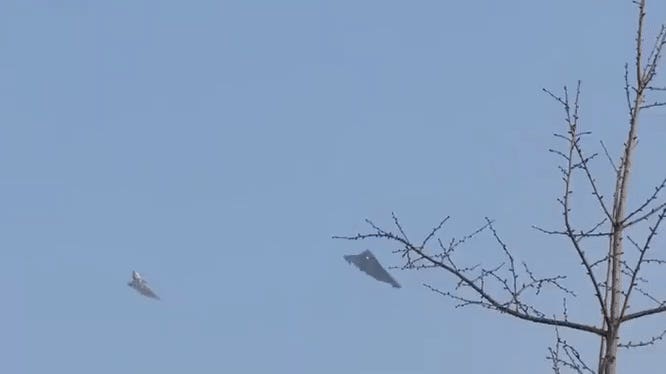On Thursday, in less than 24 hours, two Chinese aircraft brands unveiled new stealth fighter demonstrators. And any protester. The separate designs of the Chengdu and Shenyang aircraft brands may be among the most complex manned fighters ever designed.
The Chinese military traditionally reveals major new technology at the end of the Western calendar year in December or January. Perhaps most famously, the People’s Liberation Army allowed the first images of Chengdu’s J-20 stealth fighter to circulate online in January 2011. Thirteen years later, there could be hundreds of J-20s in front-line service with the PLA Air Force.
This year’s wonder is one of the most dramatic for the PLA’s PR machine. Around the same time Thursday, videos surfaced online showing two protesters from other stealth fighters in flight. The Chengdu style had a J-20 escort. The Shenyang type flew along with a clone of the Shenyang-made Sukhoi Su-27.
The two new types are tailless deltas. Its wings and all surfaces appear to be on the same horizontal plane. This can decrease a fighter’s radar signature, but it comes at a cost. “These cars are known to be aerodynamically complex aircraft with unique dynamic flight characteristics and complex flight laws,” one wrote the team in a 2007 report for the U. S. Air Force Flight Test Center. U. S.
It is evident that the PLAAF is committed to obtaining an incredibly stealthy fighter with complex flight controls, and is taking any risk. The Air Force’s two main fighter brands are based on designs. One can succeed where the other fails while still providing a significant warfare capability.
The Chinese military took the same approach with its first generation of stealth fighters. Chengdu’s twin-engine, supersonic J-20 worked as designed—and the PLAAF ultimately ordered a large number. But if the J-20 had failed, there was an alternative: the lighter Shenyang J-35, which first flew in 2012 and may yet enter front-line service as a navy carrier fighter.
Thursday’s reveal was momentous, but it was partly a marketing triumph. It should be noted that the US Air Force tested what was likely a tailless fighter demonstrator in 2020 as part of its troubled Next Generation Air Dominance program. “NGAD has come so far that the full-scale flight demonstrator has already flown in the physical world,” Will Roper, then Air Force acquisition chief, said at the time.
Where the USAF has hidden its new stealth fighter demonstrator, the PLAAF has proudly showed off both of its own new demonstrators. What happens next depends on how well the demonstrators actually work under the stress of hard use in a real-world context—and how many billions of dollars Beijing is willing to invest in one or both designs.
One or any of the protesters may simply be multirole fighters with serious air-to-air capabilities. But they can also serve as stealth ground attack aircraft. “The PLAAF is developing new medium- and long-range stealth bombers to attack regional regions and global targets,” the Pentagon noted in the most recent edition of its annual report on the Chinese military.
The long-range stealth bomber, the Xi’an H-20 flying wing, is still in development and may not appear in public for a few years. The medium-range stealth bomber, called JH-XX, remains a mystery.
Could Thursday’s wonderful protesters evolve into medium bombers? It is possible.
Sources:
1. Justin Bronk
2. OedoSoldier
3. U. S. Air Force
4. US Department of Defense
5. Defense One
One Community. Many Voices. Create a free account to share your thoughts.
Our community is about connecting people through open and thoughtful conversations. We want our readers to share their views and exchange ideas and facts in a safe space.
To do this, please comply with the posting regulations in our site’s terms of use. We summarize some of those key regulations below. Bottom line, stay civil.
Your post will be rejected if we notice that it seems to contain:
User accounts will be blocked if we notice or believe that users are engaged in:
So how can you be a user?
Thank you for reading our Community Standards. Read the full list of publication regulations discovered in our site’s terms of use.

